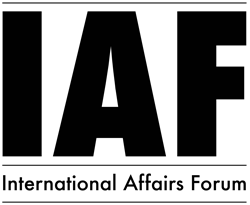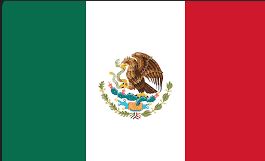| Mon. June 30, 2025 |
 |
|
||
|
||||
| ||||

Mexico became the first nation in the world to hold an election for the entire judicial system. This unprecedented move did not arise in a vacuum but reflects a deeper, more complex struggle within Mexico’s legal and political history.
Mexico’s judiciary has long occupied an uneasy position within the country’s political and institutional framework. For decades, Mexico’s judiciary has moved between efforts at reform and periods of setback. It has been shaped by political transitions, corruption scandals, and deep structural flaws. Despite constitutional guarantees of independence, executive interference and weak enforcement have consistently undermined its legitimacy and autonomy.
The judiciary has often lacked the insulation necessary to serve as a genuine counterweight to executive power. Under the long rule of the Institutional Revolutionary Party (PRI), which governed Mexico uninterrupted for over 70 years until 2000, the courts functioned less as independent arbiters and more as administrative tools of presidential authority. Judicial appointments were politically motivated, and landmark rulings almost never diverged from the interests of the executive. Legal scholars have termed this model “Authoritarian Legality”, a system where judicial institutions exist but operate in subordination to elite political imperatives. The political liberalization of the 1990s and the PRI’s electoral defeat in 2000 provided an opening for reform. The 1994 overhaul of the Supreme Court also expanded its constitutional powers, introducing mechanisms like "Constitutional Controversies" and "Actions of Unconstitutionality." These changes were seen as essential steps toward judicial independence. Yet, the effects of these reforms remained partial. Despite the introduction of more robust constitutional review mechanisms, the judiciary as a whole continued to face internal and external constraints.
A Wilson Center study highlighted the chronic underfunding of courts, poor training for lower-level judges, and inadequate case management. Access to justice was uneven—particularly for rural and marginalized communities. A study by RAND underscored that the high costs and inefficiencies of legal proceedings have driven many citizens to rely on informal or extrajudicial mechanisms, further deepening public mistrust in the judiciary.
The 2008 shift to an adversarial criminal justice model represented another turning point. The move away from an inquisitorial system promised greater transparency and stronger due process protections. While courtroom dynamics improved in some regions, the reform fell short of systemic transformation. Prosecutorial timidity, lack of infrastructure, and political pressures continued to impede meaningful access to justice. In many jurisdictions, oral trials became performative rather than substantive.
Even as new laws took effect, informal pressures continued to distort the judiciary’s functioning. Judges were susceptible to political interference, organized crime, and institutional hierarchies. Research published in the International Journal of Constitutional Law revealed that promotions and disciplinary actions within the judiciary were often based on political loyalty rather than merit. Mechanisms meant to protect judicial independence, such as tenure or internal review bodies, were either ineffective or compromised.
Power within the judiciary remained concentrated at the top, with the Supreme Court and the Federal Electoral Tribunal presiding over high-profile constitutional disputes and occasionally delivering progressive rulings. Yet these courts operated within a broader system marked by chronic backlogs, ambiguous jurisprudence, and endemic corruption in the lower courts. Internal oversight was not only inconsistent but often weaponized to punish dissent rather than curb misconduct.
These long-standing deficiencies set the stage for President Andrés Manuel López Obrador’s (AMLO) most radical judicial reform initiative, Plan C. After earlier reform efforts (Plans A and B) failed to pass, AMLO introduced Plan C on February 5, 2024: a sweeping package of 18 constitutional amendments and two legal initiatives. Its centerpiece was the replacement of the appointment-based judiciary with an elected one. Every judicial office, from the Supreme Court to local judgeships, would now be filled through popular vote. Despite vocal opposition and mounting legal challenges, the Morena-led Congress passed the reforms. With legislative approval secured, Mexico prepared for its first national judicial elections, scheduled for June 1, 2025. This move was hailed by the ruling party as a democratizing breakthrough, a way to dismantle what AMLO and his successor Claudia Sheinbaum described as a “judicial oligarchy.” According to them, judges had long served entrenched interests and obstructed progressive reforms. Electoral legitimacy, they argued, would replace elite insulation with public accountability.
But as the elections drew closer, alarm spread among legal scholars, civil society, and international observers. Judicial independence, critics argued, is not sustained by popularity contests. Judges are meant to apply law impartially and not to campaign, solicit votes, or cater to public opinion. The very notion of campaigning, especially in a country where organized crime and political intimidation are entrenched, introduced dangerous incentives.
The mechanics of the reform proved inconsistent, approximately 2,600 judicial positions were up for election, including nine seats on the Supreme Court. Yet public knowledge of the candidates was minimal. Unlike political candidates, judicial hopefuls were not widely vetted, did not debate publicly, and often failed to disclose their legal philosophies or past rulings. In some cases, candidates faced unresolved allegations of corruption or links to criminal organizations. The evaluation process leading up to the elections further undermined legitimacy. A tripartite vetting committee, composed of members from the executive, legislature, and judiciary, was supposed to pre-screen nominees. However, amid growing legal opposition and a court ruling to suspend the process, the judiciary’s committee resigned in January 2025. Despite this, other branches proceeded, sending unvetted or partially vetted candidates to the Senate. The result was a process widely criticized as opaque and constitutionally dubious.
On June 1, 2025, the country went to the polls. What was billed as a transformative day in Mexican democracy ended in voter apathy. Turnout was just 13%—the lowest for any national election in three decades. Many polling stations saw minimal activity. Ballots were confusing, and most voters lacked the information needed to make informed choices. Instead of deepening democratic engagement, the election revealed a wide chasm between reform rhetoric and institutional readiness.
Early results confirmed fears of political consolidation. Morena-backed candidates leading on all nine Supreme Court seats and won majorities in many lower courts. With control over the executive, legislature, and now the judiciary, Morena can effectively erase traditional checks and balances. Far from reducing elite control over the courts, Plan C seemed to replace one form of capture with another. Yet the government celebrated the outcome. President Sheinbaum declared it a historic achievement, arguing that for the first time, judges were directly accountable to the people. But accountability through elections is not the same as judicial independence. Legal experts have warned that such reforms risk turning judges into political actors, susceptible to party agendas and populist pressures.
International markets responded cautiously, with equities slipping before the vote but stabilizing afterward, indicating uncertainty rather than panic. Analysts noted that the institutional framework remained intact, for now. But human rights organizations and foreign investors flagged the elections as a long-term risk to rule of law, especially if judicial rulings begin to reflect partisan interests. The broader implications of Mexico’s 2025 judicial elections are still unfolding. Another round is scheduled for 2027, but the structural consequences are already clear. Judicial elections, particularly in fragile democracies, do not automatically yield independence, transparency, or public trust. In Mexico’s case, they may deepen politicization and erode what little judicial legitimacy remained.
What Mexico’s trajectory illustrates is that reform without institutional depth can do more harm than good. The country has moved from authoritarian legalism to judicial populism, bypassing the slower but necessary work of building professional, insulated, and accountable courts. Without cultural, financial, and legal support for judicial independence, elections risk turning the judiciary into another front in partisan warfare.
Mexico’s judiciary has never lacked formal reforms. What it has lacked—and continues to lack—is a sustainable foundation for impartial justice. Until that changes, the promise of democratic accountability will remain unfulfilled.
Rishab Rathi is a Research Assistant at the Centre of Policy Research and Governance (CPRG), leading the Conflict Studies vertical with a special emphasis on Africa and South-Asia. With an academic background in international relations and political science, his work explores geopolitical dynamics, post-colonial governance, and conflict resolution across diverse global contexts.
| Comments in Chronological order (0 total comments) | |
| Report Abuse |
| Contact Us | About Us | Donate | Terms & Conditions |
|
All Rights Reserved. Copyright 2002 - 2025